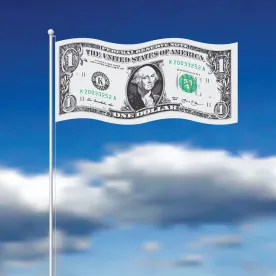While price gouging is often discussed in the context of existing products, new products and services may be covered as well. As a result, businesses looking to introduce new products during a price gouging emergency can seek guidance from the relevant price gouging laws before setting a price for their new good or service.
Since not all price gouging regulations cover the same products, a business that plans to bring a new product to market may first want to determine whether that product appears to be subject to their state’s price gouging laws. Many price gouging laws only cover essential goods, though definitions of “essential” vary. Since the range of goods and services covered varies widely, and any pricing constraints would only apply to products that are covered. Analyzing the relevant statutes will be instructive.
Some states have statutes that specifically address the pricing of new products. These statutes fall into several categories:
Considering the costs of production
Some statutes and regulations evaluate pricing for new products by considering the costs incurred in bringing them to market. California’s executive order addresses covered goods that were not offered for sale prior to this emergency, providing that such goods would be sold at an “unconscionably excessive price” if they were priced at more than fifty percent greater than either: (a) the amount an entity paid for them or (b) if the entity did not purchase the goods, then the total costs they bore in producing and selling them. EO N-44-20.
Comparing a new product to similar existing products
Other statutes evaluate pricing for new goods by using the prices of similar goods as a comparison. For example, under Maine’s statute, there is generally a “rebuttable presumption that a price is unconscionable” if it exceeds by more than 15% the price of similar goods offered prior to the state of emergency, plus the “increased cost” due to the market disruption. When considering whether the price of a new product is “unconscionable” for purposes of the statute, Maine considers the prices of “similar goods or services offered for sale by another person similarly situated prior to the abnormal market disruption” as a baseline, allowing for increased costs and the 15% margin above that. Me. Rev. Stat. Ann. Tit. 10, § 1105.
Comparing to other sellers
If the product is new to a seller, but not necessarily new to the market, then some states will consider the prices at which others sold that good. In North Carolina, for example, if the “seller did not sell … or offer to sell” the new good prior to this state of emergency, then “the price at which the goods or service was generally available in the trade area shall be used as a factor in determining if the seller is charging an unreasonably excessive price.” N.C. Gen. Stat. §75-38(a) (emphasis added). Other factors that will be considered include whether there are “additional costs imposed by the seller’s supplier or other costs of providing the good or service during the triggering event,” or whether “[t]he price charged by the seller is attributable to [market] fluctuations,” “or to reasonable expenses and charges for attendant business risk incurred in procuring or selling the goods or services,” all of which may support prices that are higher than the exact price for a similar product.
Statutes that address “similar” products
Even if a statute does not explicitly contemplate the issue of new products, statutory language referring to “similar goods and services” may provide guidance as to how these restrictions may apply to new products and services. For example, Massachusetts considers a price to be unconscionably high when there is a gross disparity between the price charged and “the price at which the same or similar product is readily obtainable from other businesses…” Addendum to Mass Req. tit. 940. § 3.18. Alabama’s statute treats a price markup that is greater than 25% of the price of a similar good as prima facie evidence of an unconscionable price. Ala. Code § 8-31-4. Many states’ price gouging laws include a “similar goods and services” reference, so it would benefit businesses within those states to consider the prices of existing products as potential benchmarks for pricing decisions.
Other considerations when setting prices
Businesses looking to bring new products to the market will likely find such new products treated similarly to other existing products. While not all states have definitive standards for reviewing the prices of new products, the exceptions built into many statutes, such as increased costs justifying high prices, will likely be applicable to new products as well. As previously discussed on this blog, to the extent that prices are increased to reflect cost increases and maintain (or even, in some cases, increase) profit margin, they likely fall within the majority of the allowable exceptions. Companies should nonetheless do their diligence to ensure they comply with the relevant price gouging laws given the wide range of methods that states use to evaluate the fairness of new product pricing.







 />i
/>i
